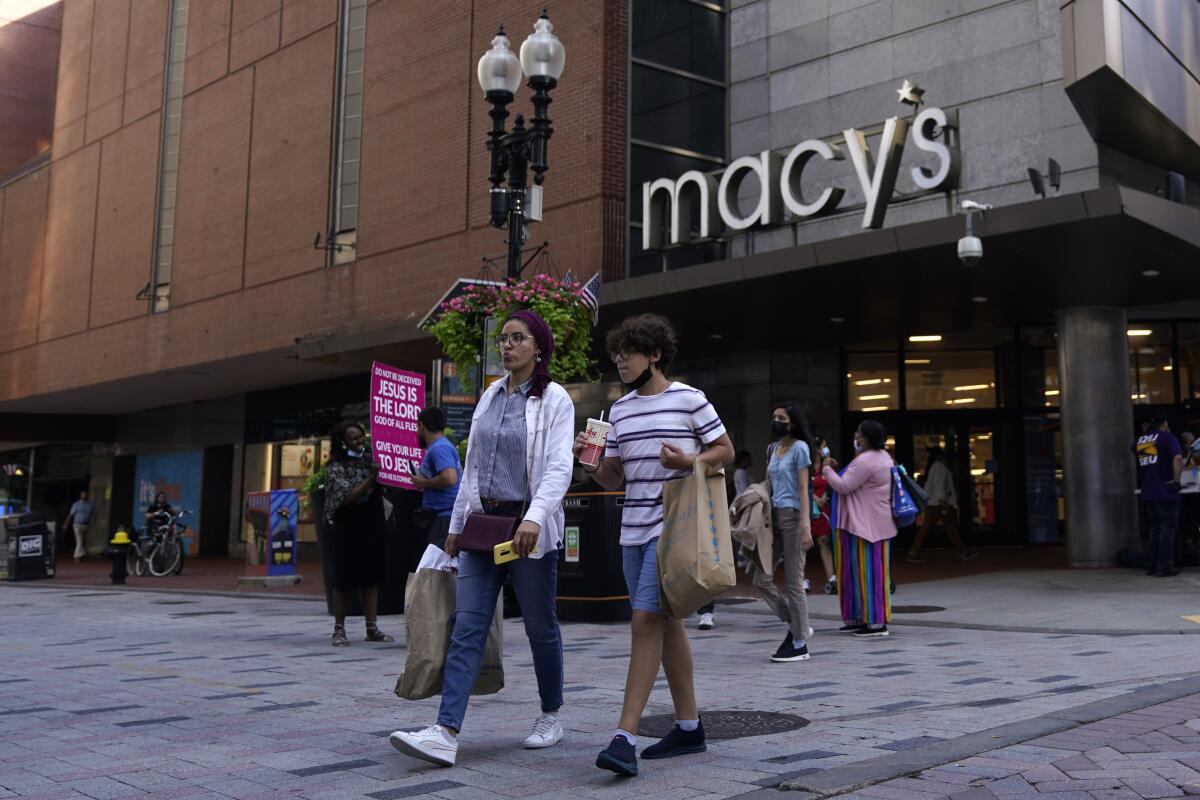U.S. consumer spending powers ahead despite inflation pickup

- Share via
American consumers — the U.S. economy’s main engine — showed little hesitation on spending last month despite the fastest inflation in three decades, setting up the economy for a year-end growth spurt.
Purchases of goods and services, unadjusted for changes in prices, increased 1.3%, the most since March, the Commerce Department said Wednesday. Even after accounting for higher prices, spending still exceeded projections, a sign that consumers started their holiday shopping early.
The figures, the main course of a pre-Thanksgiving data feast that included robust orders for business equipment, a surge in exports and a pickup in new-home sales, help explain why several economists upgraded their tracking estimates for fourth-quarter economic growth.
The latest inflation numbers shocked even pessimistic economists, but they’re still transitory.
The reports further complicate matters for Federal Reserve policymakers, who are trying to balance rapid inflation and a labor market still 4 million jobs shy of pre-pandemic levels. Mary Daly, president of the San Francisco Fed bank, is the latest official to suggest that a faster tapering of the central bank’s asset-purchase program may be needed.
The personal consumption expenditures price gauge, which the Federal Reserve uses for its inflation target, rose 0.6% from a month earlier and 5% from October 2020. After adjusting for higher inflation, spending rose a healthy 0.7% as outlays for both goods and services picked up.
“The combination of higher inflation risks and consumer resiliency means that the likelihood of the Fed accelerating the pace of taper has increased substantially,” Bloomberg Economics’ Anna Wong and Eliza Winger wrote after the report.
Economists at JPMorgan Chase & Co. revised up their fourth-quarter GDP tracking estimate to an annualized 7% from 5% after Wednesday’s data. Morgan Stanley economists took their running forecast up to 8.7% from 3%, while Capital Economics now expects 6.5% growth.
That’s not to say the economy is without challenges. Robust demand is further straining supply chains and inflation has driven a collapse in consumer sentiment. Moreover, a pickup in COVID-19 cases in recent weeks risks restraining activity through the winter.
Meanwhile, wages and salaries rose 0.8% in October after a 0.9% increase, the Commerce Department’s report showed. A host of companies, including Macy’s Inc. and Sherwin-Williams Co., are raising wages and boosting perks in a war for talent.
If wage growth is sustained at the current pace, “spending can remain torrid even without new government help and in the face of rapid inflation,” Stephen Stanley, chief economist at Amherst Pierpont Securities, said in a note.
Personal income climbed 0.5% even as government assistance to workers during the pandemic subsided further. The savings rate — or personal saving as a share of disposable income — fell to 7.3%, more in line with pre-pandemic readings and signaling Americans have less of a cushion.
Disposable personal income, or after-tax income adjusted for inflation, fell for a third straight month, dropping 0.3% in October. Inflation-adjusted spending on merchandise rose 1% last month, while outlays for services increased 0.5%, the report showed.
The core price index, which excludes food and energy, rose 4.1% from a year earlier, the most since 1991. Looking ahead, inflation is expected to surge even higher in the coming months as persistent supply chain challenges and ongoing hiring difficulties push prices higher.
Bloomberg’s Kristy Scheuble, Sophie Caronello and Michael McDonough contributed to this report.
More to Read
Inside the business of entertainment
The Wide Shot brings you news, analysis and insights on everything from streaming wars to production — and what it all means for the future.
You may occasionally receive promotional content from the Los Angeles Times.











